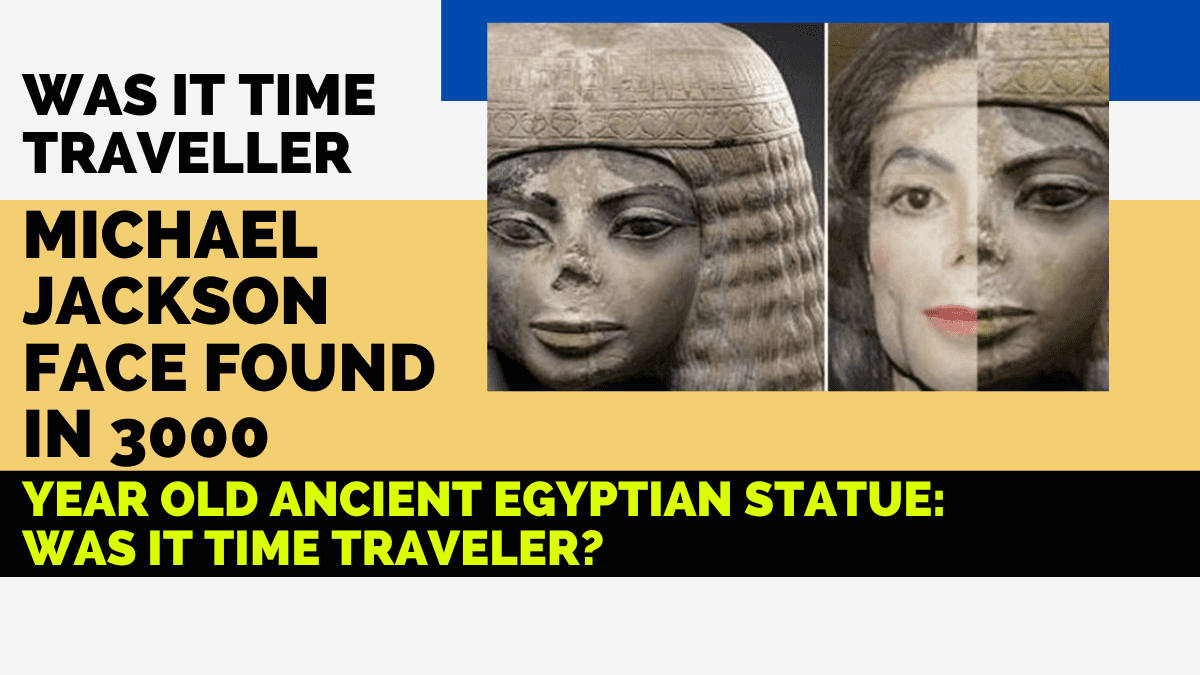Throughout history, there have been numerous instances of unexplained phenomena that have left scientists and historians scratching their heads. One such mystery emerged when a 3000-year-old ancient Egyptian statue was discovered, bearing an uncanny resemblance to the late pop icon, Michael Jackson. This astonishing find has sparked speculation and debate, with some suggesting the possibility of time travel. In this article, we will delve into the details of this intriguing discovery and explore the various theories surrounding it.
Contents
The Discovery of the Ancient Egyptian Statue
In 1988, during an excavation in the Karnak Temple Complex in Luxor, Egypt, archaeologists unearthed a statue that dates back to the reign of Pharaoh Amenhotep III, who ruled from 1386 to 1349 BC. The statue, made of black granite, depicts a seated figure with strikingly familiar facial features resembling those of Michael Jackson.
Upon closer examination, experts noted the statue’s prominent cheekbones, narrow nose, and full lips, all of which bear a striking resemblance to the late pop star. The statue’s hairstyle, which features a long, curly wig, is also reminiscent of Jackson’s iconic look.
Theories and Speculations
The discovery of the Michael Jackson-like face on the ancient Egyptian statue has led to various theories and speculations, with some suggesting the possibility of time travel. While this theory may seem far-fetched, it cannot be entirely dismissed due to the lack of concrete evidence.
1. Coincidence or Pareidolia?
One explanation for the resemblance is the phenomenon known as pareidolia, which is the tendency of the human brain to perceive familiar patterns, such as faces, in random or ambiguous stimuli. It is possible that the resemblance between the statue and Michael Jackson is purely coincidental, and our brains are simply making connections where none exist.
2. Influence of Ancient Egyptian Culture on Modern Pop Icons
Another theory suggests that the ancient Egyptian culture may have influenced modern pop icons, including Michael Jackson. It is well-known that Jackson had a deep fascination with ancient Egypt and its mythology. He often incorporated Egyptian symbols and imagery into his music videos and stage performances. It is possible that his admiration for ancient Egypt influenced his physical appearance, leading to the resemblance found in the statue.
3. Time Travel or Reincarnation?
The most controversial theory surrounding the Michael Jackson-like face on the ancient Egyptian statue is the possibility of time travel or reincarnation. Proponents of this theory argue that Michael Jackson may have traveled back in time or been reincarnated as an ancient Egyptian during the reign of Pharaoh Amenhotep III. They believe that the statue is evidence of this extraordinary occurrence.
Expert Opinions and Skepticism
While the theories surrounding the Michael Jackson-like face on the ancient Egyptian statue are intriguing, many experts remain skeptical. Egyptologists and archaeologists argue that the resemblance is purely coincidental and that attributing it to time travel or reincarnation is baseless.
Dr. Zahi Hawass, a renowned Egyptologist, dismisses the notion of time travel, stating that it is a product of science fiction and has no basis in reality. He suggests that the resemblance is a result of artistic conventions and the limited range of facial features that ancient Egyptian artists had at their disposal.
Conclusion
The discovery of a 3000-year-old ancient Egyptian statue bearing a striking resemblance to Michael Jackson has captivated the world and sparked numerous theories and speculations. While the possibility of time travel or reincarnation cannot be entirely ruled out, it is important to approach such claims with skepticism and rely on scientific evidence.
Whether the resemblance is a mere coincidence, a result of pareidolia, or influenced by ancient Egyptian culture, the mystery surrounding the Michael Jackson-like face on the ancient Egyptian statue continues to intrigue and fascinate. It serves as a reminder of the enigmatic nature of history and the mysteries that still await our discovery.

